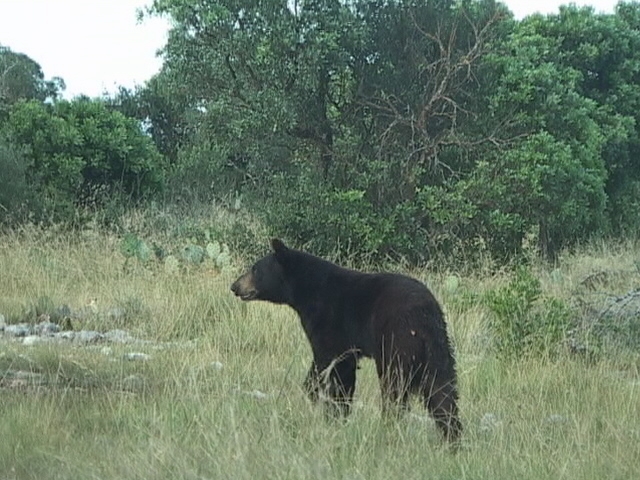Texas has been plagued by exceptional drought for almost an entire year and it’s taking a toll on native wildlife. Trees are losing their leaves, creeks and rivers have evaporated and the dry weather is driving black bears into urban areas searching for both food and water. In West Texas, the bears have been traveling out of their normal habitats for a couple of reasons. Not only has it been dry, but the place is literally burning up.
With fires scorching black bear ranges in the mountains of West Texas and Northern Mexico, and extreme drought making it hard to find water and food, the usually solitary bears have been on the move this summer, increasingly making their way into towns and cities. And where bears need to go is where the food is, be it dumpsters, gardens or even bird and deer feeders.

There have been 13 black bear sightings in west Texas since May 31, according to Jonah Evans, a Texas Parks and Wildlife diversity biologist for the Trans-Pecos region in charge of tracking bear sightings in the area. In all of 2010, he said, there was only one reported sighting. “They’re going to where they need to,” said Louis Harveson, a Sul Ross State University professor of wildlife management who directs the school’s Borderlands Research Institute.
With all their proximity to humans lately there have been only black bear sightings, but no attacks on humans have been reported to authorities in Texas this year. But the same is not true for other regions this summer, where similar stories about bears traveling to find food have led to tragedy. A 61 year-old woman was killed by a black bear in Arizona, seven teens were attacked by a bear in Alaska, and a female grizzly bear with two cubs killed a hiker in Yellowstone National Park.